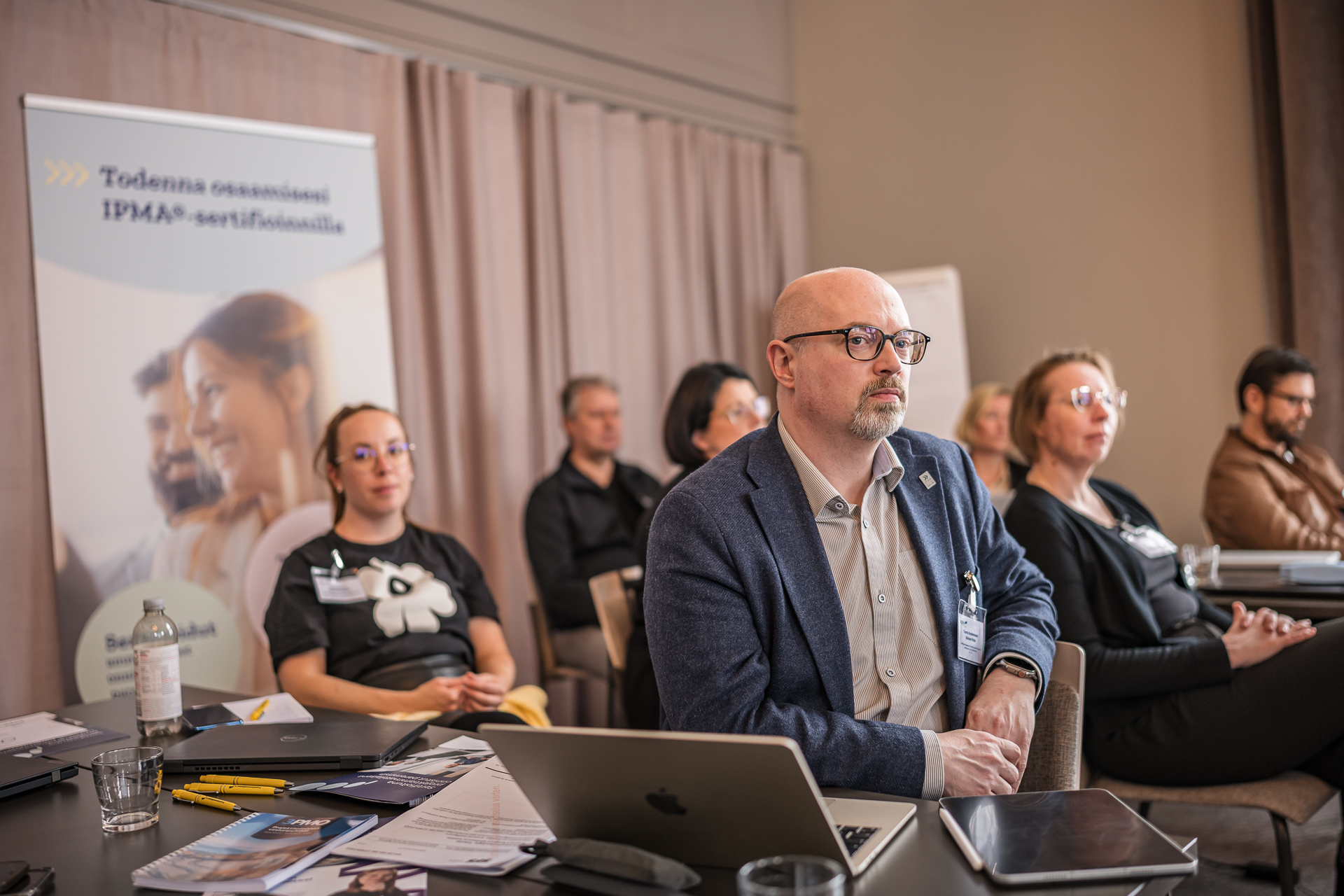The IPMA certification has been with me for almost two decades. I have worked as an assessor, activity leader, developer and production manager. Along the way, I have seen hundreds of different applicants – from entry-level project managers to experienced programme and portfolio managers. Certification has not meant the same thing to all of them. For some, it has been a formal recognition of competence, for others it has been a place of personal growth. From my point of view, certification is first and foremost a tool for personal development – not an end in itself, nor a ready-made mould in which to place oneself.
Text by Tuomo Koskenvaara

Below I will try to open up a realistic but hopeful view of what certification can deliver, what it cannot deliver and what it can at best trigger. I am writing this as much for project managers as for their supervisors, HR managers and all those who build professional development in a systematic and goal-oriented way.
What does certification measure – and what can’t it measure?
IPMA’s certification model is based on a comprehensive and long-developed internationally recognised competency model covering practical, human and perspective competencies. Certification is based on evidence of competence and experience (experience is not required at level D). The higher the level of certification, the more demanding the environment and the more experience and evidence that must be demonstrated. The model provides applicable qualifications and metrics for each professional area (project, programme, portfolio, agile development, training, consulting and most recently as described by IPMA, PMO).
While the assessment itself is comprehensive and reviews the applicant’s performance in the context of the requested standard, it is always done by assessing what has already happened and within the framework of this model. The assessment does not focus on future competences but on past evidence.
As a certifier, I can see how many applicants stop for the first time to really reflect on their own activities within the competency model. The average applicant for certification is a talented person who believes they can pass the certification process. Consequently, practical experience in their own working environment has often been successful.
Often in the assessment itself, I stop to consider the relevance of the applicant’s context and how well the applicant understands it. There are many companies in Finland where project maturity is at a very high level. In such an environment, the applicant may carry out the processes assigned to him/her without the need to reflect on why this is done. Since IPMA certification is based on demonstrating capability through practical activities, it is sufficient in principle that the applicant has been given responsibilities and has performed them in accordance with the requirements – this fulfils the requirements for certification, even if the underlying understanding of the activities is not always apparent.
In the certification process, we cannot take into account our own assessment of the applicant’s self-assessment, his or her ability to reflect critically on what he or she has learned, or his or her motivation to grow in future tasks. Nor does it reveal the extent to which the applicant has been self-directed, as opposed to having worked within a well-defined framework. This can easily lead to a situation where, from an assessment point of view, all the requirements are met, but at the same time it remains unclear whether the applicant has really grasped the big picture and is even interested in it.
IPMA certification therefore measures successful performance in a particular environment, but not necessarily how a person perceives the complexity of their environment, their own responsibilities or opportunities for improvement. This is why it is particularly valuable in the assessment process to hear the applicant’s own reflections and reasoning – not just about what has been done, but why and how it has contributed to the surrounding context. Ideally, the applicant will demonstrate not only competence, but also self-awareness and an understanding of where they want to grow.
Knowledge, thinking and leadership – from theory to practice
For many applicants, certification opens up a new perspective on their own work. Everyday routines are explained. The basics of decision-making become visible. At the same time, blind spots are revealed, things that have not been thought of or justified.
I have found that, at its best, certification brings about a change in thinking. People no longer act instinctively but consciously – they can justify why they act the way they do. This does not mean automatic improvement, but it does allow for purposeful and sustained improvement.
Leadership in project work is not just about knowing the methods. It is the ability to work in the midst of conflict, to lead different people and to keep a clear direction in the face of uncertainty. These things do not fit into assessment metrics, but certification can provide the linguistic and intellectual tools to do them.
Career step or milestone?
For many, the Project Manager certification acts as a career advancement tool. It is common for a C-certificate holder to seek more responsibility, and a B-level graduate to take on responsibility for operations development or a frontline role. Organisations value externally recognised skills and this can open doors that would otherwise not be available.
Yet we constantly see situations where a certificate has been obtained but the opportunities it brings are not exploited at organisational level. The project manager is left in his or her old role without the opportunity to apply what he or she has learned, and in the worst case, motivation fades. On the other hand, in the best examples, the certification acts as a catalyst for the development of the whole organisation, creating a common language, a better understanding of business objectives and the role of project activities in success.
In a successful development model, certification is not an isolated act, but part of strategic competence management. It is combined with other tools such as mentoring, appraisal interviews, project debriefs and portfolio management. In this way, certification becomes more than a piece of paper – it becomes a practical change.
A certificate is a tool, not a goal.
The certification provides a framework to critically and developmentally examine your own competences. It is a tool that works best when it is actively used. If it is seen as an end in itself, it narrows – but if it is used as a tool for development, it opens up opportunities.
The value of the certificate will only be realised when the insights it provides are put into practice – for example, through better communication, clearer decisions or better consideration of people. It’s not just a demonstration of what you can do – it’s a demonstration that you’re ready to improve. Incompleteness is not a weakness. It is a prerequisite for growth. A certificate may be a good map, but the route is still one that each individual has to take for themselves. And that is why its value is so great: it allows you to choose your direction consciously.
Author
Tuomo Koskenvaara
COO of Certification Body, Projektiammattilaiset ry



